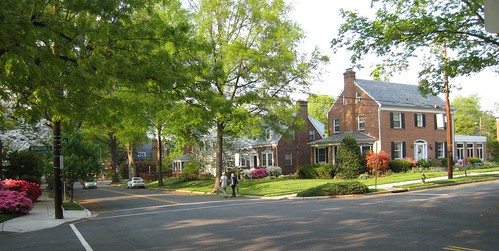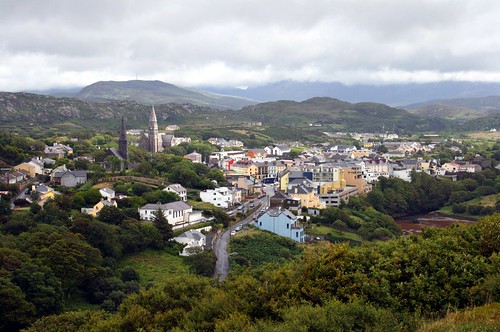Why we love the places we love - what the research says

Posted November 24, 2010 at 1:33PM
The John S. and James L. Knight Foundation just released the findings from its three-year study of people’s attachment to communities, assisted by polling and analysis from Gallup. The findings strengthen the interim conclusions reported here last fall that social offerings, openness and beauty are far more important than perceptions of the economy, jobs or basic services and even safety in creating a lasting emotional bond between people and their community.
In a week dedicated to giving thanks, it seems especially appropriate to be thankful for community, and even more thankful for the qualities of community that matter most. (It also seems particularly helpful to focus on local communities, given that the country and world writ larger appear headed for hell in a handbasket, but today’s not the day for elaborating on that one.)
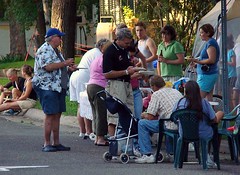 The 26 cities in the Knight Soul of the Community survey with the highest levels of resident love and passion for their community, or resident attachment, also had the highest rates of economic growth over time.
The 26 cities in the Knight Soul of the Community survey with the highest levels of resident love and passion for their community, or resident attachment, also had the highest rates of economic growth over time.
“Our theory is that when a community’s residents are highly attached, they will spend more time there, spend more money, they’re more productive and tend to be more entrepreneurial,” said Jon Clifton, deputy director of the Gallup World Poll, in a press release. “The study bears out that theory and now provides all community leaders the knowledge they need to make a sustainable impact on their community.”
Despite changes in the economy since the study was begun in 2008, the researchers found some constants:
- The things that create the greatest emotional connection between people and their community – social offerings, openness and aesthetics – have remained stable for three years. Other factors studied in the research were civic involvement, social capital, education, perception of the local economy, leadership, safety, emotional well-being and basic services.
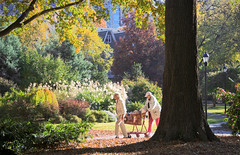 The link between local GDP and residents’ emotional bonds to a place has also remained steady despite declines in the economy over the three years of the study. Communities with residents who are more attached to a place show stronger growth even in tough economic times.
The link between local GDP and residents’ emotional bonds to a place has also remained steady despite declines in the economy over the three years of the study. Communities with residents who are more attached to a place show stronger growth even in tough economic times. - People’s perception of their community’s performance in social offerings, openness and beauty has a greater impact on their emotional bonds to a place than their demographic characteristics.
- Perception of the local economy is not a leading reason residents create an emotional bond to a place.
The study methodology analyzed the relationships between the answers to two sets of questions - one to determine how attached respondents were to their communities, and another to determine how respondents felt about particular community aspects. The researchers sought to discover which aspects identified in the second set of questions best predicted the results of the first. The main website includes an interactive map that you can use to click on the various cities and compare their results.
For example, in Saint Paul, the findings followed those elsewhere with social offerings, aesthetics, and openness as the top three factors, and education not far behind. If I read the data correctly, “civic involvement” and “social capital” ranked as the least influential factors. (The survey questionnaire did not use those words when polling respondents.)
Writing in The Christian Science Monitor, Brian Anthony Hernandez emphasized the research’s findings concerning community attachment and economic growth:
“If you sometimes stop and wonder why you donate to your local school’s annual fundraiser, help plant trees on your town’s main drag or offer free hot cocoa at every street fair, the answer is because you're either very generous or you know what's good for your local economy.
“New research suggests when people ‘love’ the culture of their towns, economic prosperity follows. In a three-year Gallup survey of 26 U.S. cities, researchers learned the communities with highest levels of resident attachment — a person's passion for where he or she lives — also had the highest rates of GDP growth over time.”
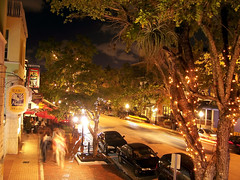 Leaders in three of the 26 cities surveyed – Miami, Charlotte and Detroit – already have plans in place to use the findings to help transform their communities, according to Knight and Gallup. For example, The Miami Foundation, formerly Dade Community Foundation, will use the research to identify needs specific to the South Florida region – and address them through advocating for public policy changes or taking direct action. For more on those three projects, which are supported by Knight Foundation, go here.
Leaders in three of the 26 cities surveyed – Miami, Charlotte and Detroit – already have plans in place to use the findings to help transform their communities, according to Knight and Gallup. For example, The Miami Foundation, formerly Dade Community Foundation, will use the research to identify needs specific to the South Florida region – and address them through advocating for public policy changes or taking direct action. For more on those three projects, which are supported by Knight Foundation, go here.
The cities surveyed were chosen because the Knight brothers owned newspapers in them. They vary in population size, economic levels and how urban or rural they are, and include the following: Aberdeen, South Dakota; Akron, Ohio; Biloxi, Mississippi; Boulder, Colorado; Bradenton, Florida; Charlotte, N.C.; Columbia, S.C.; Columbus, Ga.; Detroit, Michigan; Duluth, Minnesota; Fort Wayne, Indiana; Gary, Indiana; Grand Forks, North Dakota; Lexington, Kentucky; Long Beach, California; Macon, Georgia; Miami, Florida; Milledgeville, Georgia; Myrtle Beach, South Carolina; Palm Beach, Florida; Philadelphia, Pennsylvania; San Jose, California; St. Paul, Minnesota; State College, Pennsylvania; Tallahassee, Florida; and Wichita, Kansas.
Gallup randomly surveyed 43,000 adults by phone from 2008 to 2010. You can download the full report here.
Move your cursor over the images for credit information.
